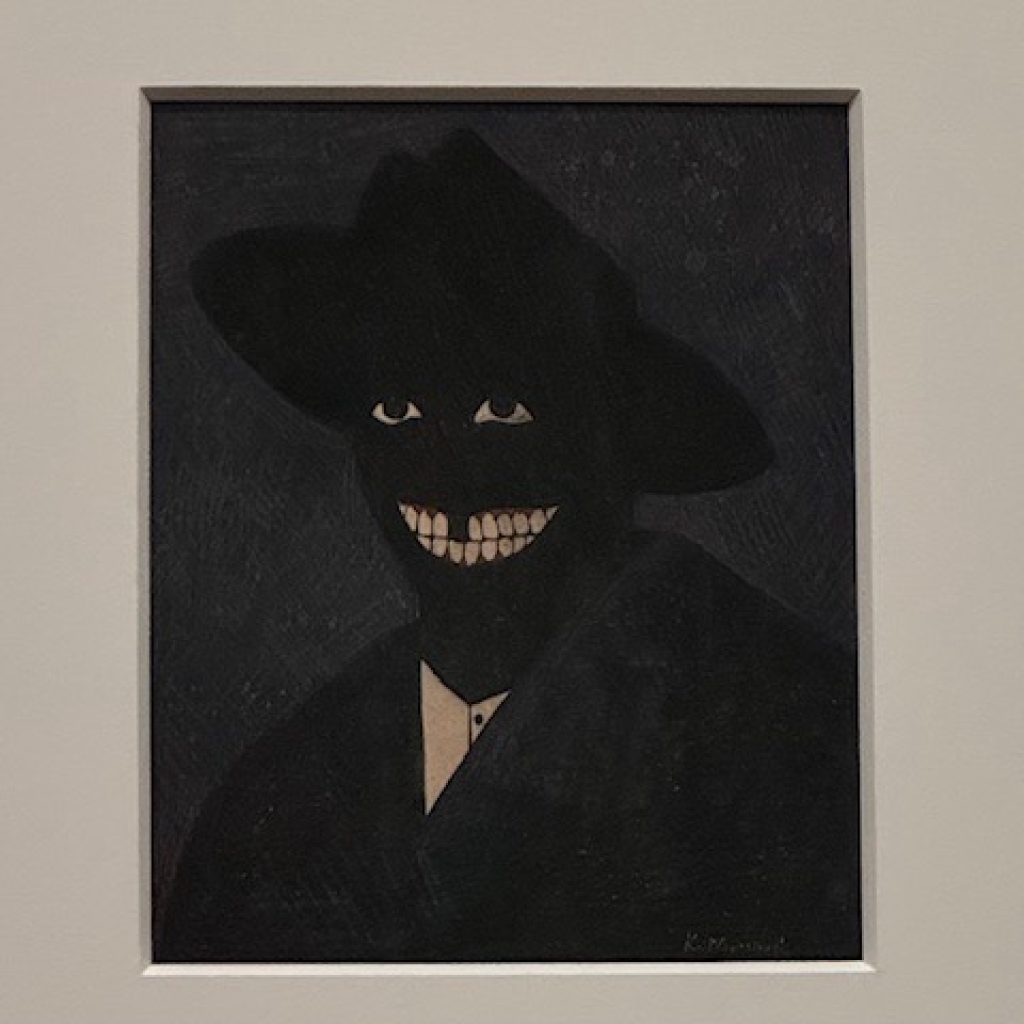In London, the 2025 Art season is officially here, ushered in by the distinguished artist, Kerry James Marshall. His mesmerizing exhibition titled, The Histories, showing at the Royal Academy of Art, surveys Marshall’s celebrated forty-five year career. Curated by Mark Godfrey, the presentation occupies the main galleries of the Royal Academy of Art—filling the eleven rooms with Marshall’s exuberant works. This exhibition is the largest presentation of Marshall’s paintings in Europe and it is sponsored by BNP Paribas, Sotheby’s and David Zwirner, to name a few. There is so much to love about this showcase, from Mark Godfrey’s curatorial eye to Marshall’s larger than life paintings. The massive scale of the pieces reveal vivid details of everyday life in action. His paintings capture a wide range of human emotions: curiosity, humor, leisure, work and agency.
This exhibition truly illuminates Kerry James Marshall’s fearless genius. It shows his critique of western art, history and the academy writ large. One area that stands out is his engagement with literature. Going through the exhibition, I could see how Marshall has turned to books as inspiration for his paintings. Beginning with his earliest series titled, Invisible Man, these works were inspired by Ralph Ellison’s phenomenal novel of the same name. Similarly, in the new series titled, Africa Revisited, Marshall draws from Olaudah Equiano’s slave narrative. John James Audubon is also a source of inspiration on Marshall. His seminal book The Birds of America, are captured in Marshall’s 2020 series, Black and Part Black birds of America. Here are a few highlights from The Histories:

In his 1980s series of paintings titled, Invisible Man, Marshall plays with the idea of being seen and ignored; of being center-stage and in the shadows. This motif is evident in, A Portrait of the Artist as a shadow of His Former Self, 1980; in which Marshall uses egg Tempura – a very fragile yet durable material- on paper to reflect the character’s trials in a society that rejects him. Ellison’s 1952 novel follows a young man whose aspirations for education and employment are thwarted by racism. In response the rejection, the protagonist declares himself invisible and begins to live underground. Marshall’s interpretation of the text is to paint black figures with very dark skin tones against very dark backgrounds. When the audience looks at the paintings they have to strain their eyes to make out the figures. The paintings, with characters who smile and present a benign demeanor- often highlight the duality between self-perception and critical social rejection. Although the protagonist sees himself as an upstanding, ambitious individual he can’t escape the negative perception society has heaped on him. It is very clever of Marshall to illustrate the ease of how a non-threatening individual can be overlooked and pushed to the margins of society. In essence, the artworks are saying it’s very difficult to make yourself known when the world refuses to see you. In his discussion with Mark Godfrey, at the Royal Academy of Art, Marshall said this is a “creative choice” that allows him to show the “complexity of blackness.” He creates different shades of black by “changing the temperature of paints from warm to cool or vice versa.” For Marshall, this creative choice is used only for fictional figures. When painting actual people he uses colors that reflect their skin tone.

Another book that has inspired Marshall work is, Narrative of the Life of Olaudah Equiano of Gustavus Vassa. From this memoir Marshall painted the series, Africa Revisited, which was produced specifically for the Royal Academy of Art. Relying on Equiano’s memoir, archival letters, and notes, Marshall made the following paintings: Abduction of Olaudah and His Sister, 2023 (seen above), Haul, Cove, and The Assassination of Shaka Zulu. The aim of these works is to highlight small-scale slave trade or the “freelancing” carried out by very few people. In The White Queens of Africa Ruth, and White Queens of Africa Collette, Marshall focuses on the betrayals of post-colonial African leaders who married white women. Marshall sees contradiction in the politics of Léopold Sédar Senghor’s Négritude Movement and the way he lived his life. These paintings, made from Acrylic and PVC, highlight themes of complicity, greed, betrayal and hypocrisy. In conversation with Mark Godfrey, Marshall noted that although this is a challenging topic, the narratives can be found in the archival records. Africa Revisited is bound to provoke some tough questions. To some it might seem as if Marshall is adding to the negative image of Africans in Art when largely, their ability to paint their own story is ignored by the academy.

Lastly, One of the most endearing motifs in Kerry James Marshall’s body of work is his inclusion of birds. The above painting titled, Past Times, 1997, is an example of how Marshall punctuates most of his work with birds. Crows, goldfinches, cardinals, grackles and rose-breasted grosbeak; you’ll see small birds holding banners or perched observing the events or smoothly gliding by. As an avid birder, Marshall has been inspired by John James Audubon’s book, The Birds of America. For Marshall, birds mean beauty, freedom, flight. As he explained in his conversation with Mark Godfrey; “As a metaphor they represent a certain type of liberation; the ability to break free from the bounds of gravity and move about as they will.” Overall, this is an amazing exhibition worthy of anyone’s time.
Kerry James Marshall: The Histories can be seen at the Main Galleries of the Royal Academy of Art. The exhibition is available until 18 January 2026. Small Tip: Get there early before the crowds arrive.


